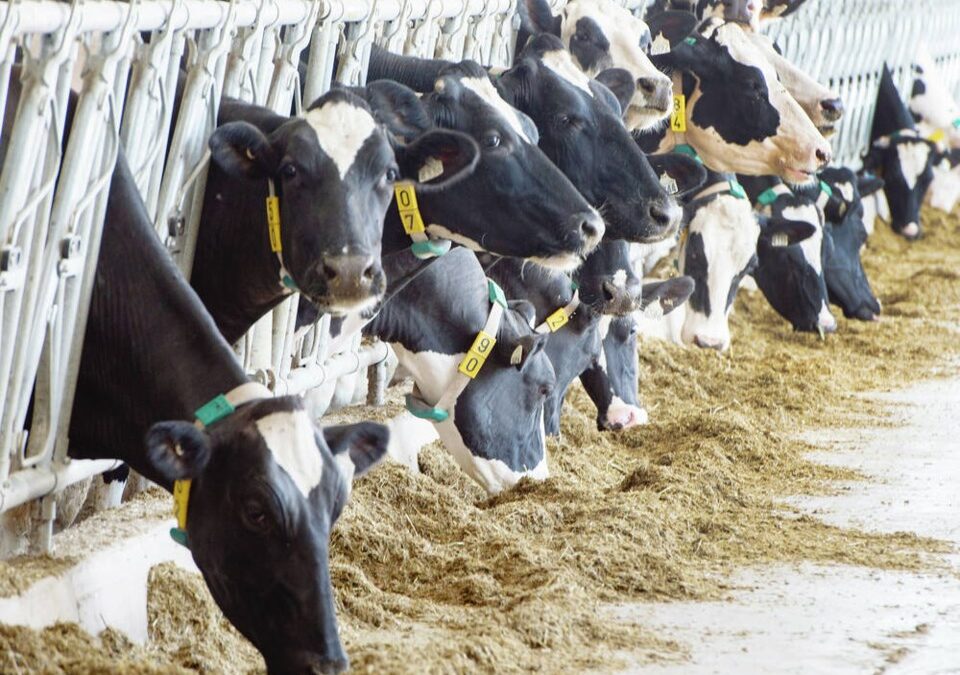Courtesy of the Times Colonist
Photo: Dairy cows at a Quebec farm in 2018. The UN Environment Programmme reports that agriculture accounts for about 40 per cent of all human-linked methane emissions, mainly from livestock (manure and animal emissions cow farts, to put it simply) but also from rice paddies, writes Trevor Hancock. THE CANADIAN PRESS/Ryan Remiorz
As I reported last week, CHRM Consulting has just completed an updated report on the ecological footprint of Saanich, which is available on the District of Saanich website.
The report found Saanich’s footprint was equivalent to four planets’ worth of biocapacity each year, meaning we require four times more biologically productive land and water area than is available to us on a fair global basis.
Of that, almost half (46 per cent) results from “senior government impacts,” including “infrastructure and services provided to citizens that are not captured at the local level.”
We pay for them through our federal and provincial taxes, so they are not included in the consumption data used in the ecoCity Footprint Tool to calculate the local footprint.
The remaining 54 per cent consists of the footprint associated with food (24 per cent), transportation (17 per cent), buildings (seven per cent) and consumables and waste (six per cent).
The report provides considerable detail on what makes up each component of the footprint, and what can be done to reduce our footprint, with the aim of getting to a One Planet footprint as soon as possible.
Our food consumption (and waste) is the largest component outside of senior government impacts.
Since local data on food consumption was not available — it would need a special survey — national averages were used instead. Thus, this report tells us about what our impact is and what would need to happen nationally, and presumably, for the most part, locally.
First, food accounts for 20 per cent of what is known as our consumption-based greenhouse gas (GHG) emissions, that is, emissions anywhere in the world associated with the production, processing and distribution of the food we consume in Canada.
Of that, only nine per cent of the emissions come from the transportation of food, meaning we need to focus mainly on what we eat, rather than where it comes from.
This is, in fact, an underestimate, as the way the footprint is calculated does not include methane, and we know farming is a major source of methane.
The UN Environment Program reports that agriculture accounts for about 40 per cent of all human-linked methane emissions, mainly from livestock (manure and animal emissions — cow farts, to put it simply) but also from rice paddies.
Moreover, because methane is a more potent GHG than CO2 and only remains in the atmosphere for a decade or so, an increase or reduction in methane can have quite a rapid impact on global warming over the short term.
Overall, the footprint of our food consumption alone is equivalent to one planet, in part because of the amount of land needed to produce our food.
As a recent article in Anthropocene Magazine noted, “Planet Earth is basically a farm … over half of all habitable land is used for agriculture.”
More than half of the food footprint (54 per cent) is due to our consumption of meat, fish and eggs, with a further 15 per cent due to dairy consumption, meaning over two-thirds (69 per cent) is attributable to animal-based foods, which are much more energy and land-intensive.
Moreover, the report notes: “In Canada, about half the food we produce is wasted,” with a significant part of that waste occurring in the supply chain.
So not surprisingly, the report suggests: “We can achieve dramatic reduction in our footprint and emissions if we prioritize reducing food waste across the supply chain and also shift to low carbon food choices.”
But reducing the ecological footprint of our agrifood system is not simply a matter of changing what we eat and wasting less food.
There are implications for the entire system of agriculture, as a recent article in PLOS Climate showed.
The international team of researchers used a global-food-system model to examine how the agrifood system could actually remove CO2 from the atmosphere.
They conclude that while low-meat “flexitarian” diets can contribute, the largest impacts will come from “hydrogen-powered fertilizer production, livestock feeds, organic and inorganic soil amendments, agroforestry, and sustainable seafood harvesting practices,” all of which we could and should do locally.
Next week, I will look at what the report says about transportation, buildings, and consumables and waste, and what else it will take to get to a One Planet Saanich.
thancock@uvic.ca
Dr. Trevor Hancock is a retired professor and senior scholar at the University of Victoria’s School of Public Health and Social Policy
